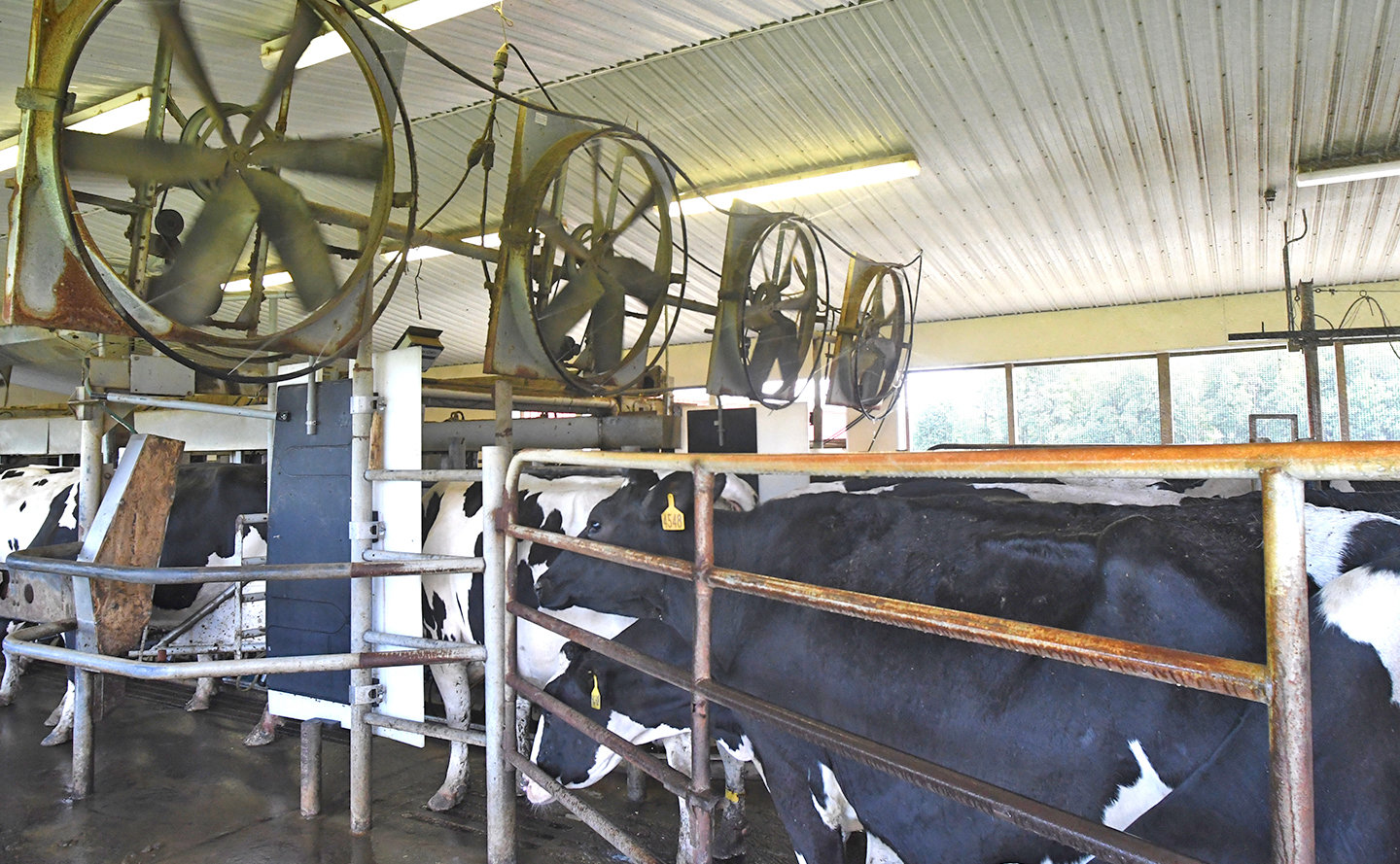 While a summer heatwave blazes across New York conjuring up thoughts of fans, sprinklers and shades, most people may not realize these are the same tools employed by dairy farmers to keep their cows cool and comfortable too.
While a summer heatwave blazes across New York conjuring up thoughts of fans, sprinklers and shades, most people may not realize these are the same tools employed by dairy farmers to keep their cows cool and comfortable too.
“Our house has no air conditioning, so there have been times that I have threatened to sleep in the barn because it is actually cooler than our house,” jokes Kerry Adams of Black Brook Farm in Manchester. Adams said cow comfort is very important, and they rely on the research from Cornell University to assist them with determining the best methods to implement during heat waves.
Staying hydrated is important.
“Our 400 cows and young stock typically consume around 5,000 gallons of water per day, but during this heat wave it has jumped to 7,000 gallons,” says Adams. “So, making sure they have an adequate water supply is a priority.”
Many farmers use large propeller ceiling fans in barns to help move warm air away from the cows while circulating in fresh air.
“Cows don’t have the ability to cool themselves in high heat,” says farm owner Taylor Clifford in Locust-Spring Farm in Sloansville. “Without evaporative cooling or air flow of some sort, the cow’s milk production can be impacted.”
“One end of the barn is made up of large fans that act as tunnel ventilation to pull air through the barn from the opposite end,” Clifford went on to explain. “The barn is climate controlled by a thermostat that changes the speed of the fans based on the temperature in the barn.”
Other farms choose to blow air across the width of the barn instead of the length of the barn.
“Traditionally, farms have fans that blow air lengthwise through the barn, but our nutritionist suggested we try this,” says Paul Fouts, owner of Fouts Farm in Groton.
“What sold me on this method is that typically, when you blow the long way down, by the time you get to the end of the barn, the temperature is warmer because of the heat that cows give off. Now we’re getting fresh air from both sides of the barn, right where the cows are—either eating or laying down,” he said.
Some farms have sprinkler systems that are automatically activated when the barn gets warm. Like lawn sprinklers only elevated, a series of pipes runs the length of the barn above the cows. Sprinkler heads disperse water in a 360-degree radius to provide an even spread of water across the pen. Once the cow’s skin is soaked, sprinklers are turned off to allow for evaporation, which is the process that removes heat from the cow.
At North Harbor Dairy at Old McDonald’s farm in Sackets Harbor, “Every barn has a sprinkler over the feed bunk and sprinklers come on every 10 minutes. Our holding pen has fans as well as sprinklers over the cows,” says Dairy Manager Brian Robbins.
This year, Reyncrest Farm in Genesee County, installed shades in some areas of the barn. “The activity monitors worn by each cow track panting—a way cows abate heat—so the more panting, the hotter the cow,” says farm owner Kelly Reynolds. “This has really helped us pinpoint areas in the pen that were getting hotter at certain times of the day. We installed shades in those areas and have seen a big improvement based on the amount of time they spend resting comfortably,” says Reynolds.
Cow care is a priority for dairy farmers all year round as it directly affects milk quality and cow health.
According to Reynolds, many of the decisions made on the farm are a direct result of how the cows are acting. “Monitoring the activity trackers worn by our cows and watching how much they are laying down, eating and their general demeanor helps us to decide where we might need to make an improvement in the barn or change a routine,” says Reynolds. “It’s all about keeping our cows cool and comfortable.”
Source: romesentinel.com









